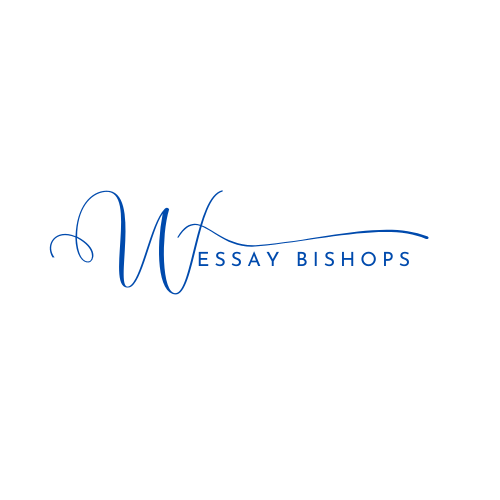Posted: June 1st, 2023
Annotated Bibliography of Research Sources English 104
English 104
14 November 2019
Annotated Bibliography of Research Sources
Alves, Cássia Cristiane de Freitas, et al. “Assistive Technology Applied to Education of Students with Visual Impairment.” Revista Panamericana de Salud Pública, vol. 26, no. 2, 2009, pp. 148–152, Organización Panamericana de la Salud,
DOI: 10.1590/S1020-49892009000800007.
The main purpose is to verify the role of information technology and its assistive applications in the educational field.
This resource wasn’t helpful a lot, but it introduces some examples of assistive technology used in their educational systems that I can search further, however, it agrees with the idea of BVI people generate conflicts in many aspects such psychological and social aspects which threatens the quality of life, thus threatens their self-esteem.
Asakawa, Chieko. “How New Technology Helps Blind People Explore the World.” YouTube, uploaded by TED, 5 January 2016, www.youtube.com/watch?v=f-mQIWnO3Ag.
Dr. Asakawa’s main claim was technology is helping BVI people in raising their self-esteem by depending fully on themselves using simple assistive technologies such as electronic reader. She mentioned the history of assistive technology for people that are visually impaired and blind.
Her talk could be taken as a case study of blind woman and her emotional feeling with and without technology. However, I find difficulties in finding how she was getting her education as she didn’t mentioned that in depth.
Eric Hasper, et al. “Methods for Creating and Evaluating 3D Tactile Images to Teach STEM Courses to the Visually Impaired.” Journal of College Science Teaching, vol. 44, no. 6, 2015, p. 92-99, National Science Teachers Association, 2015, www.jstor.org/stable/43632001
This paper focuses on increasing the participation of Blind and Visually Impaired (BVI) in learning STEM using 3D tactile figures instead of interpreting flat figures and picture into words.
This research supports my idea where students must improve their learning process by socializing, in order to achieve that, one method in the learning process is to determine visual figures, tables and pictures and convert them into tactile figure using 3D printing technology.
Mani, M N. “The role of integrated education for blind children.” Community eye health
vol. 11,27 (1998): 41-2.
(summary and evaluation please follow owl purdue instructions)
Spinczyk, Dominik, et al. “Factors influencing the process of learning mathematics among visually impaired and blind people” Computers in Biology and Medicine, vol. 104, 2018, doi.org/10.1016/j.compbiomed.2018.10.025.
In this research, the authors claimed that learning mathematics is a significant step in both academic and professional aspects; however, blind and visually impaired people were facing difficulties in learning mathematics. The purpose of this research was to highlight the reasons that prevent blind and visually impaired students from learning mathematics and to compare whether modern methods are more effective than traditional methods in seven different fields. They found that modern methods achieved outstanding results, where it showed improvement in almost 90% of the groups.
This source was useful in specific ways, where it introduces new categories to observe the student’s reaction towards learning using the new assisting method. Moreover, the researchers had conducted a questionnaire written and analyzed by a psychologist in order to assure the accuracy of their results. The results weren’t biased, because the modern method wasn’t affective in all disciplinaries, but it has better results than the other method.
This article has inspired me in looking forward to search more about the process of learning while I’m concentrating on the idea of implementing and improving the process of teaching in the governmental schools. Instead, I can work more closely into developing the self-esteem of some blind and visually impaired people to motivate the and raise their confidence towards learning scientific concepts.
Taljaard, J. (2016). A Review of Multi-Sensory Technologies in a Science, Technology, Engineering, Arts and Mathematics (STEAM) Classroom. Journal of learning Design, 9(2), 46-55.
This article reviews the literature on multi-sensory technology and, in particular, looks at answering the question: “What multi-sensory technologies are available to use in a science, technology, engineering, arts and mathematics (STEAM) classroom, and do they affect student engagement and learning outcomes?” Here engagement is defined as motivation, interest, curiosity and attitude. This review identifies tools and software from a burgeoning, yet limited literature. To answer this question, this review will include the following: defining learning styles; background on multi-sensory instruction; multi-sensory education today; STEM and the rise of STEAM; a look at some multi-sensory tools; and the benefits of using multi-sensory technologies in education.
Order | Check Discount
Sample Homework Assignments & Research Topics
Tags:
Help write my thesis paper,
I need help writing my dissertation thesis,
I need help writing my PhD dissertation,
I paid someone to write my dissertation,
Masters dissertation help
